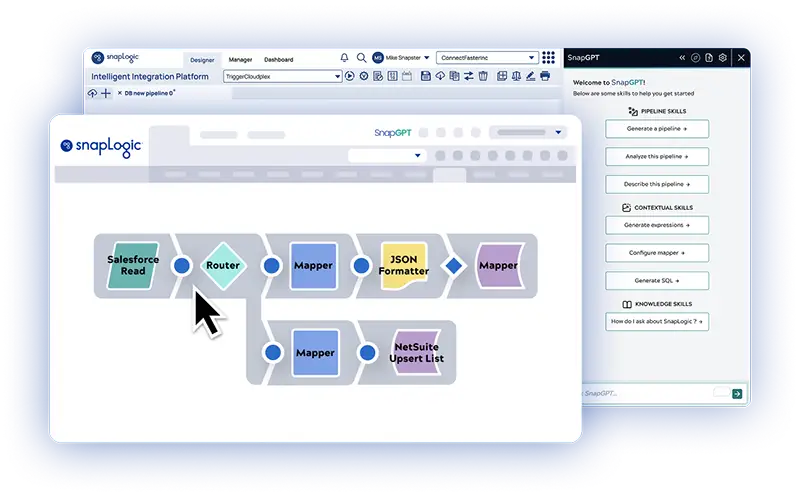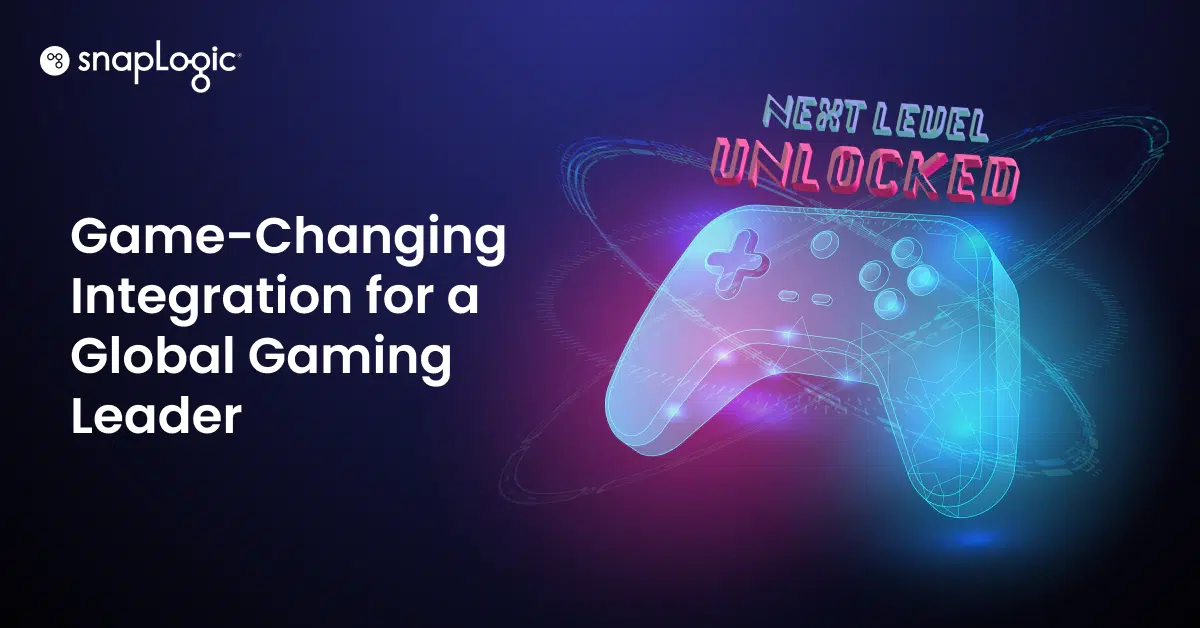Organizations now have bigger technology stacks than ever. In 2017, organizations across the globe used an average of 16 SaaS apps to get work done. In 2021, that number rose to 110.
The number of apps organizations use continues to multiply. While all of these apps may help with productivity, they also present a new challenge for the organization’s data structure. Data has to flow from one app to another and touch many systems throughout its lifecycle within an organization’s ecosystem. For that to happen, different apps have to integrate with each other. Such integration can be achieved using one of two integration models:
- Point-to-point (P2P) integration
- Hub-and-spoke integration
In point-to-point integration, two systems talk to each other directly with the help of custom coding or an API. The receiver and sender of data are coupled together with no other software program serving as an intermediary. It is a simple, efficient way to integrate two apps. However, point-to-point integration is not suitable for organizations that use hundreds of apps to handle large volumes of data and we will explore why.
How Point-to-Point Integration Works
Point-to-point integration works through custom coding, APIs, or a combination of both. To integrate two applications with the help of custom coding, all you need is a developer who is familiar with the apps. Usually, such integrations do not make use of APIs, and the two systems are coupled together, with relevant data flowing from one system to another through periodic synchronization.
The second way to achieve point-to-point integration is with the help of application programming interfaces (APIs). APIs are a set of protocols that allow two different software systems to communicate with each other. Usually, SaaS apps provide their own APIs so that their customers can easily integrate other apps with them. For example, the popular CRM tool Salesforce offers multiple APIs that can be used to integrate the platform with apps from different industries, like healthcare, manufacturing, and marketing. They also offer detailed guides and instructions on using those APIs for integration. Using those instructions, any developer can integrate Salesforce with other apps.
Sometimes, P2P integration is achieved through a combination of APIs and custom coding. Think of websites that have a map feature and use the Google Maps API to embed different locations on their pages. Developers use custom JavaScript code, get an API key from Google, and use that key to enable the map’s feature on the website.
Advantages and Disadvantages of Point-to-Point Integration
P2P integration is simple and efficient when you have just a few systems to integrate, but it becomes more complex when you scale up and want to integrate more apps. It also isn’t as good at handling large volumes of data.
P2P Integration Is Simple on a Small Scale but Complex When You Grow Your Tech Stack
To integrate two software systems, all you need is someone who is knowledgeable about both systems to create custom code and integrate them. So a developer familiar with your CRM can easily integrate it with your email automation tool through custom code, APIs, or a combination of both. They will create a test environment, map the relevant fields, do a couple of test runs, schedule a periodic data sync, and get it up and running within a week. Compare that with investing in an integration platform, and the whole process costs you next to nothing in terms of resources.
But when you add more apps to the mix and use P2P integration to connect them, you get a really complex spaghetti architecture. A complex integration architecture becomes a resource drain. The problem with such architecture is that only the people who built it have in-depth knowledge of it, so you become reliant on them. In an ideal world, developers building P2P integrations would document their every move, so someone can easily take over the maintenance of the integration architecture. In the real world, being overly reliant on your developers becomes an issue when something breaks and the developer who built the integration is on vacation. Or they leave without providing sufficient documentation for another developer to take over.
Integration architectures built solely through P2P integration use a lot of resources. It costs next to nothing when you integrate two apps, but when two become three and three become four, the costs add up. The hours spent building and maintaining such architecture, the complex troubleshooting, and the fact that every time you add a new app, you need to build new integrations makes this model unsustainable as your organization scales.
It Is Not as Advanced as a Hub-and-Spoke Model
In the hub-and-spoke integration model, an integration platform serves as the hub for all data (spokes). The platform drives all workflows and automations and is the intermediary between all systems. Usually, such a platform comes with a dashboard that gives you a view of all automations and the option to build new integrations via drag-and-drop features. By using P2P integration, you miss out on all of these advanced features.
In P2P integration, monitoring your integration architecture is difficult because there’s no interactive visual representation of the data flow in the form of a dashboard. Also, in P2P integration, large volumes of data are usually transferred in batches. That means you don’t get real-time data as you would with a hub-and-spoke integration model. In time-sensitive cases, such as leads that need to go from your website to your CRM through a marketing tool, you need the real-time flow of data.
When to Use Point-to-Point Integration
P2P integration is ideal when you want to embed pre-built, third-party features in your application. For example, if you want to add a map to your app, you can use the Google Maps API. Or, if you want to add pre-built email features to your app, you can use the Nylas API. There are a lot of commercial and non-commercial APIs out there that offer useful pre-built features for the tools you’re already using. By using P2P integration, you can integrate your app with third-party APIs and add new features without relying on a developer.
P2P integration can easily connect two to three apps in your organization’s tech stack.
For all other use cases, the hub-and-spoke integration model with an integration platform at its center is the way to go.
Find the Best Data Integration Architecture for Your Organization
If you have been thinking about integration models and want to build a resilient integration architecture for your organization, read our Enterprise Guide to Modern Data Integration. It has all the information you need about a hub and spoke model for data integration, how AI and machine learning augment integration, and how you can find the right integration platform.








